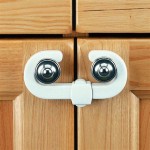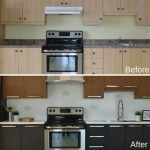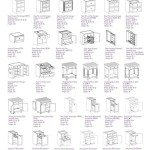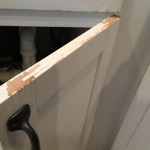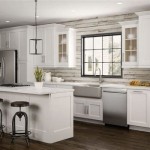Essential Aspects of Kitchen Cabinet Door Router Bits
Kitchen Cabinet Door Router Bits are essential components for woodworking and cabinetry professionals, as they play a vital role in crafting beautiful and functional cabinet doors. Understanding the essential aspects of these bits is crucial to ensure precise, efficient, and consistent results. This article delves into the critical factors that define the functionality and effectiveness of Kitchen Cabinet Door Router Bits.Profile and Shape: The profile and shape of a router bit determine the contour and design of the cabinet door. There are numerous profile options available, each creating a distinct aesthetic effect. From simple cove and ogee profiles to intricate beading and raised panel bits, the choice depends on the desired style and overall design of the cabinet doors.
Diameter and Cutting Depth: The diameter of a router bit refers to its width, which impacts the depth of the cut it can make. The cutting depth is crucial for ensuring a clean and precise fit for cabinet doors. Matching the router bit diameter to the desired door thickness is essential to prevent overcutting or insufficient depth.
Flute Design: The flute design of a router bit affects its cutting efficiency and performance. Straight flutes are commonly used for general-purpose routing, while helical flutes offer improved chip removal and a smoother cut. Up-cut flutes are designed to eject chips upwards, preventing clogging, while down-cut flutes push chips downwards, creating a clean cut with minimal tear-out.
Material and Construction: The material used in the construction of router bits influences their durability and performance. Carbide-tipped bits are known for their exceptional hardness and longevity, making them suitable for demanding applications and extended use. Solid steel bits are more economical but may require more frequent sharpening.
Bearing Type and Size: The bearing type and size on a router bit determine how it guides the cut and follows the template or edge of the workpiece. Ball bearings are commonly used for general-purpose routing, while flush trim bearings allow for precise trimming of edges. The bearing size should match the thickness of the workpiece to ensure proper guidance and prevent uneven cuts.
Compatibility and Fit: Kitchen Cabinet Door Router Bits must be compatible with the router and collet size used. A snug fit between the bit and collet ensures secure and precise operation. Different shank sizes are available, and selecting the correct size for the router is essential to prevent slippage and accidents.
In conclusion, understanding the essential aspects of Kitchen Cabinet Door Router Bits empowers woodworking professionals to make informed decisions when selecting and using these tools. From profile and shape to material and construction, each aspect plays a critical role in achieving the desired results and ensuring the durability and efficiency of cabinetry projects.
3 Pc Cabinet Door Router Bit Sets Infinity Tools

3pc Set 1 2 Shank Raised Panel Cabinet Door Router Bit Woodwork Cutter Tool Hot

Raised Panel Cabinet Door Router Bit Set 3 Pc Mlcs Premium

Cabinet Maker Router Bits Set 5 Pc Undercut Mlcs Premium

Shaker Cabinet Router Bits 5 Pc Set Mlcs Woodworking

Cabinet Door Edge Router Bits Making Industrial Quality Rattle Free From Amana Tool Carbide Tipped S

Choosing And Using Raised Panel Router Bits For Cabinet Doors

Rail And Stile Bits Infinity Tools

Router Bit Sets Door Window Shaker 3 Raised Panel Cabinet Set With Back Cutter Raiser 1 2 Shank Yonico 12350

Ultimate Glass Door Making Sets Infinity Tools
Related Posts

